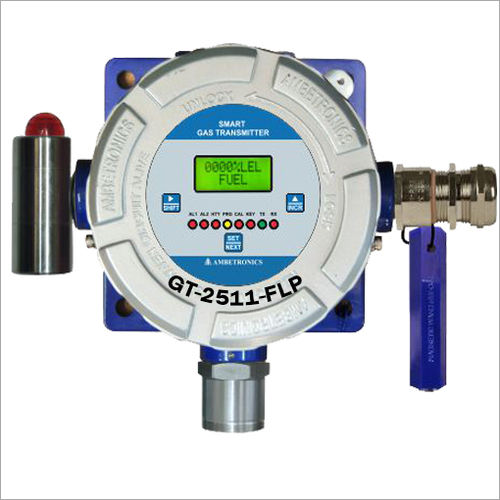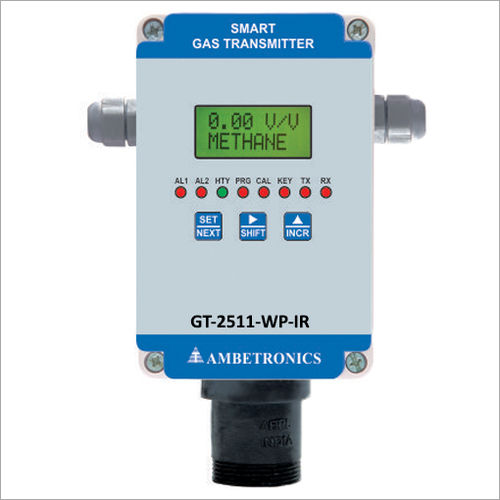- Gas Detector
- Gas Monitors
- Gas Analyzer
- Fixed Data Logger Scanner
- Clean Room Monitoring Equipment
- Internet Of Things (IoT)
- Temperature Humidity Transmitter
- Digital Stroboscope Tachometer
- Vibration Monitoring Equipments
- Gas Detection System
- Process Control Instruments
- Data Loggers
- Portable Gas Detectors
- Process Indicators
- Gas Alarm
- Calibration Kit
- Data Converters
- IIoT Loggers-Gateways
- Temperature Transmitter
- Sensors
- Gas Leak Detector
- Universal Data Logger
- Gas Leak Alert

Toxic Gas Detector
29315.00 INR/Piece
Product Details:
- Dimension (L*W*H) Millimeter (mm)
- Power 24 Volt (v)
- Type Other
- Click to view more
X
Toxic Gas Detector Price And Quantity
- 26750.00 - 35750.00 INR/Piece
- 29315.00 INR/Piece
- 1 Piece
Toxic Gas Detector Product Specifications
- Other
- Millimeter (mm)
- 24 Volt (v)
Toxic Gas Detector Trade Information
- Cash on Delivery (COD) Cash Against Delivery (CAD) Cash Advance (CA) Cash in Advance (CID)
- Per Week
- 1 Week
- Within a certain price range free samples are available
- Operating Manual
- Western Europe South America Eastern Europe Middle East Central America Asia North America Australia Africa
- All India
- ISO 9001: 2015; CE Certification; CCOE & CMRI Approvals; PESO Tested.
Product Description
A toxic gas detector is a device designed to monitor the presence of hazardous gases in the air and alert individuals or systems if the concentration of these gases reaches dangerous levels. These detectors are crucial in various settings, including industrial facilities, laboratories, manufacturing plants, and other environments where the release of toxic gases could pose a threat to human health and safety.
Key features of toxic gas detectors include:
1. Gas Sensors: These detectors are equipped with sensors specifically designed to detect the presence of certain toxic gases. Common sensors include electrochemical sensors, infrared sensors, and catalytic bead sensors, each tailored to detect specific types of gases.
2. Alarm System: Toxic gas detectors are equipped with audible and visual alarms to notify individuals in the vicinity when the concentration of a toxic gas exceeds a pre-set threshold. Some detectors may also have vibration alarms for environments with high ambient noise.
3. Display Panel: Many detectors have a display panel that provides real-time information about the gas concentration levels. This allows users to monitor the situation and take appropriate action if needed.
4. Data Logging: Some advanced detectors come with data logging capabilities, allowing users to record and analyze gas concentration data over time. This can be valuable for identifying trends, assessing potential risks, and ensuring compliance with safety regulations.
5. Communication Interface: Some detectors are equipped with communication interfaces (e.g., Ethernet, Wi-Fi, or Bluetooth) to enable remote monitoring and control. This is particularly useful in large facilities or when integration with a centralized monitoring system is required.
6. Power Source: Toxic gas detectors may be powered by batteries or connected to a power source. Battery-powered detectors are often used in portable applications or locations without a stable power supply.
7. Calibration and Maintenance: Regular calibration is essential to ensure the accuracy of gas detectors. Some detectors have self-calibration features, and they may also provide alerts when maintenance is required.
8. Multi-Gas Detection: In environments where multiple types of toxic gases are present, multi-gas detectors are used. These devices can monitor and detect several gases simultaneously.
Tell us about your requirement

Price:
Quantity
Select Unit
- 50
- 100
- 200
- 250
- 500
- 1000+
Additional detail
Mobile number
Email
Other Products in 'Gas Detector' category
 |
AMBETRONICS ENGINEERS PVT. LTD.
All Rights Reserved.(Terms of Use) Developed and Managed by Infocom Network Private Limited. |

 English
English Spanish
Spanish French
French German
German Italian
Italian Chinese (Simplified)
Chinese (Simplified) Japanese
Japanese Korean
Korean Arabic
Arabic Portuguese
Portuguese




